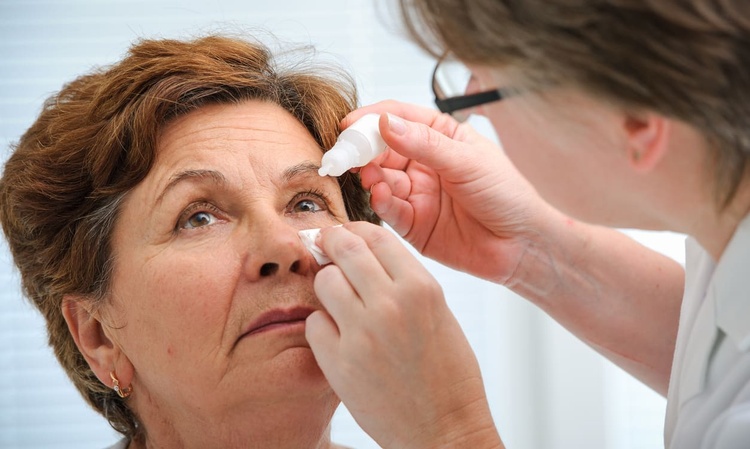Macular Degeneration: What Americans Need to Know in 2025
Macular degeneration, also known as age-related macular degeneration (AMD), is the leading cause of vision loss in people over the age of 50 in the United States. As the population continues to age, understanding the symptoms, risks, and treatment options for AMD is more important than ever.

What Is Macular Degeneration?
Macular degeneration is a progressive eye condition that affects the macula, the central part of the retina responsible for sharp, detailed vision. As the disease progresses, it can lead to significant vision loss, impacting daily activities such as reading, driving, and recognizing faces. There are two main types of AMD: dry AMD, which is more common and progresses slowly, and wet AMD, which is less common but can cause rapid vision loss if left untreated.
Who Is at Risk for Developing Macular Degeneration?
While age is the primary risk factor for macular degeneration, several other factors can increase an individual’s likelihood of developing the condition. These include:
-
Genetics: Family history plays a significant role in AMD risk.
-
Smoking: Tobacco use doubles the risk of AMD.
-
Race: Caucasians are more likely to develop AMD than other racial groups.
-
Obesity: Excess weight can increase the risk of developing advanced AMD.
-
Cardiovascular disease: Conditions affecting heart health may also impact eye health.
-
Diet: A diet low in antioxidants and omega-3 fatty acids may increase risk.
Understanding these risk factors can help Americans take proactive steps to protect their vision as they age.
What Are the Early Signs and Symptoms of AMD?
Recognizing the early signs of macular degeneration is crucial for timely intervention. Common symptoms include:
-
Blurry or fuzzy vision, especially in the center of your visual field.
-
Difficulty reading or recognizing faces without extra light.
-
Straight lines appearing wavy or distorted.
-
Dark, empty, or blurry areas in the center of vision.
-
Colors appearing less vibrant or faded.
-
Trouble adapting to low light conditions.
It’s important to note that early-stage AMD may not present noticeable symptoms, which is why regular eye exams are essential for early detection.
How Is Macular Degeneration Diagnosed and Screened?
Advancements in diagnostic technology have significantly improved the detection and monitoring of macular degeneration. In 2025, eye care professionals use a combination of methods to diagnose AMD:
-
Visual acuity tests to assess central vision sharpness.
-
Dilated eye exams to examine the retina and macula for signs of damage.
-
Amsler grid tests to detect distortions in central vision.
-
Optical coherence tomography (OCT) for detailed cross-sectional images of the retina.
-
Fluorescein angiography to detect abnormal blood vessels in wet AMD.
-
Genetic testing to identify individuals at higher risk for AMD progression.
Regular screenings, especially for those over 50 or with known risk factors, are crucial for early detection and management of AMD.
What Are the Latest Treatment Options for AMD in the U.S. (2025)?
Treatment options for macular degeneration have expanded significantly in recent years, offering hope for many patients. As of 2025, the following treatments are available in the United States:
-
Anti-VEGF injections: These remain the gold standard for treating wet AMD, with newer, longer-lasting formulations reducing the frequency of injections.
-
Photodynamic therapy: Used in combination with anti-VEGF treatments for certain cases of wet AMD.
-
Nutritional supplements: AREDS2 formula supplements can slow progression in intermediate to advanced dry AMD.
-
Stem cell therapy: Clinical trials show promising results for regenerating damaged retinal cells.
-
Gene therapy: Targeted treatments aim to correct genetic mutations associated with AMD.
-
Implantable miniature telescopes: These devices can improve vision in advanced cases of dry AMD.
How Can Americans Reduce Their Risk of Macular Degeneration?
While some risk factors for AMD are beyond control, there are several steps Americans can take to protect their vision:
-
Quit smoking or never start.
-
Maintain a healthy diet rich in leafy greens, fish, and antioxidants.
-
Exercise regularly to maintain a healthy weight and improve cardiovascular health.
-
Protect eyes from UV rays by wearing sunglasses and hats outdoors.
-
Control blood pressure and cholesterol levels.
-
Schedule regular comprehensive eye exams, especially after age 50.
By adopting these lifestyle changes and staying informed about the latest developments in AMD research and treatment, Americans can take proactive steps to preserve their vision and quality of life as they age.
In conclusion, macular degeneration remains a significant health concern for aging Americans in 2025. However, with ongoing advancements in diagnosis, treatment, and prevention strategies, there is hope for better outcomes and improved quality of life for those affected by this condition. Regular eye exams and early intervention continue to be key in managing macular degeneration effectively.
This article is for informational purposes only and should not be considered medical advice. Please consult a qualified healthcare professional for personalized guidance and treatment.




